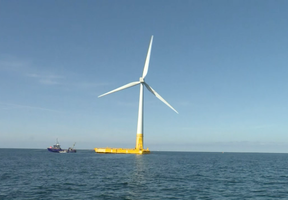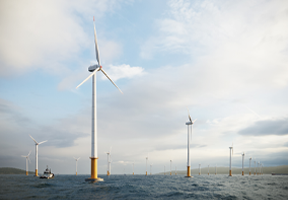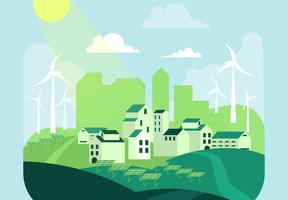Access to Energy: Regional Differences Persist
10 min read
Water, food, healthcare and education are all fundamental human needs, but they cannot be met without access to one common denominator: energy. Unfortunately, access to this is sorely lacking in emerging economies and the least developed countries.

© AFP PHOTO - DESIREY MINKOH - Some 2.8 billion people worldwide still lack access to clean cooking and heating installations, mostly in poor or unstable regions.
Access to Electricity and Clean Cooking Installations
Two criteria are usually used when assessing whether residents of a given region have suitable access to energy. The first is whether or not is available. The second is whether or not they have modern heating and cooking installations.
According to the World Bank and the United Nations, an estimated 1.3 billion people out of the global population of seven billion still do not have access to electricity. Almost half of these people –some 600 million – live in sub-Saharan Africa, accounting for two-thirds of the population there. A further 300 million or so live in India, and just as many elsewhere in Asia. While China has almost completely resolved its electrification problems, with only eight million people now without access, Latin America still counts some 30 million.1
Access to heating and clean cooking installations is so crucial because makeshift stoves and open fires cause severe indoor air pollution, leading to two million premature deaths a year, mostly women and children. It is estimated that 2.8 billion people still rely on fuelwood, , animal waste and for cooking and heating needs, all of which emit large amounts of pollutants and CO2. The situation remains serious in China (over 400 million people affected), sub-Saharan Africa (around 700 million people affected), and India in particular (over 870 million people affected). In Latin America, the problem impacts around 85 million people.
Developed, often temperate regions of the world no longer have to worry about accessing energy, but rather about affording it – a phenomenon known as 'fuel poverty'. Instead, the problem is now concentrated in tropical and equatorial countries. Here electricity is generally available in cities – despite often frequent cuts – but remains extremely patchy in rural areas. But electricity is essential for all human activities, from pumping and groundwater to powering clinics and schools. Without it, people cannot turn their lights on when it gets dark early, meaning they cannot do the artisanal work they rely on to guarantee basic living standards.
A Moderate Cost Impacted by Demographics
Providing universal access to energy would not come at a substantial cost. U.N. Secretary-General Ban Ki-moon, who was behind the 2011 Sustainable Energy For All initiative, estimated that it could be achieved with less than $50 billion a year from now to 2030. While this is five times the amount invested in energy access in 2010, it still only represents 3% of all global investment in the energy sector. From this yearly amount, only $4 billion to $5 billion would be needed to significantly improve cooking installations.
The , however, is less optimistic, particularly regarding Africa. While the continent's power generation capacity will grow fourfold by 2040, giving 950 million people in sub-Saharan Africa access to electricity, another 530 million will remain without. This is because by then the population of Africa will have doubled to 1.2 billion.2
Energy Needs Vary Over Time
Energy needs vary from region to region, but also over time. After making its way into even the remotest areas, the cell phone revolution has created a demand for specific recharging equipment and batteries.
In recent years, the need for minimum levels of well-being has been compounded by growing demand for mobility, both for people and for goods. As the number of cars on the road is directly linked to a country's economic wealth, it is rising dramatically in rapidly growing emerging economies but not in poorer ones. Highly industrialized Vietnam, for example, has a large amount of road traffic, while its more rural neighbor Cambodia does not. The world auto fleet recently passed the billion vehicle mark. Chinese vehicles made up 10% of this in 2012, with their share set to double before 2020. By then, European, American and Japanese vehicles will have dropped down to 42% from 53% today.





















